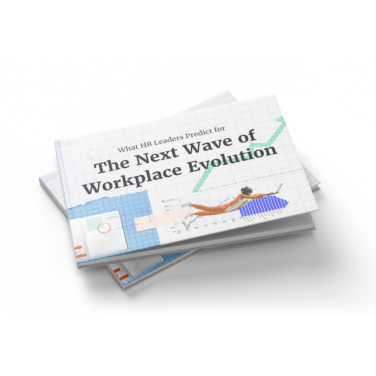As an HR or business leader, you’re no doubt a busy person. Keeping employee records up to date, ensuring compliance with the ever-changing legal landscape, finding the next rockstar hire... the list goes on.
Any tool that reduces admin and improves talent management processes would surely be of interest, right?
Well, such tools do exist! HRIS benefits include automating repetitive tasks, allowing employee self-service, and timely compliance updates. Over the years, they've saved me a lot of time and headaches.
In this article, I’ll show you how an HRIS can benefit your HR teams, employees, and organization and be an excellent ROI.
What Is An HRIS?
An HRIS (human resource information system) is a type of HR software that stores employee and organizational data and combines numerous features such as payroll and benefits management to help HR professionals at every level do their jobs more effectively.
In essence, it’s about utilizing the power of technology to oil the cogs of the organizational machine and create a happier, more productive workforce.
11 Benefits Of An HRIS
From organizing employee information to automating administrative tasks and offering insights with HR data, the right HRIS platform could be transformational for your org.
Benefits for HR departments
Much of the benefits of HRIS software will be felt in the HR department, freeing up time and resources to work on the rewarding part of the job: developing talent.
Efficiency and time-saving
Automating routine HR tasks such as employee record management, leave management, payroll processing, and benefits administration saves time allowing HR professionals to focus on more strategic activities.
Additionally, features such as employee self-service enables workers to access and update their information, reducing the number of requests HR has to deal with.
No more mountains of paperwork or juggling multiple spreadsheets!
Improved compliance
A key HRIS function is helping ensure compliance with labor laws and regulations by providing up-to-date information and automated reminders for key compliance deadlines and requirements.
Reporting and analytics
An HR reporting and analytics system enables HR teams to generate reports on various HR metrics such as headcount, turnover rates, and demographics supporting data-driven decision-making.
Improved communication
Enhances communication within the organization by providing a platform for company-wide announcements, policy updates, and other important information.
Benefits for employees
An HRIS can also make your employees' lives easier and make them feel more engaged and connected.
Easier onboarding
A smooth onboarding process helps set the tone for new hires and contributes to employee success and retention.
As an HRIS function, it might be an extension of the applicant tracking system that helped get the candidate over the line.
New hires can log into the employee self-service portal, deal with any admin, start training, and get a feel for the role and their new team.
Increased empowerment
With a self-service portal, workers will have the ability to access and manage their personal information, work schedules, vacation requests, benefits, and perks.
There's less chance of admin errors affecting pay or time off, and they can also take advantage of automated reminders.
Increased employee engagement
An HRIS boosts employee engagement by streamlining communication, gathering feedback, and personalizing development opportunities.
Such features include real-time recognition, pulse surveys, and self-service access to benefits and career growth resources.
By providing data-driven insights, HR can proactively address concerns, improve workplace culture, and enhance overall employee satisfaction.
Organizational Benefits
Of course, the ultimate beneficiary of HRIS is the organization overall (as it should be).
Cost savings
By streamlining processes, reducing manual work, and minimizing errors, an HRIS helps lower administrative costs and increases overall productivity.
An HRIS is also more cost-effective than other types of HR management systems, including HCM and HRMS systems, but it's also the most basic (if you think you might need a system with more advanced features, read our breakdown of HRIS vs HRMS vs HCM systems for tips on how to make the right choice).
Better talent management decisions
HRIS enhances talent management decisions by providing real-time insights into employee performance, skills, and engagement trends.
With centralized data, HR can identify high-potential employees, track development needs, and optimize workforce planning.
Further, predictive analytics also help in succession planning and retention strategies, ensuring better alignment between talent and business goals.
Improved communication
Enhances communication within the organization by providing a platform for company-wide announcements, policy updates, and other important information.
Improved data security
An HRIS improves data security by centralizing sensitive employee information in a secure, access-controlled system with encryption and authentication protocols.
Role-based access ensures that only authorized personnel can view or edit specific data, reducing the risk of breaches.
Additionally, audit logs and compliance features help track changes, detect anomalies, and meet legal requirements for data protection.
Features Of A Human Resource Information System
HRIS systems come in many different shapes and sizes to suit all orgz. Here are some of the main HRIS features to look out for:
- Employee database management: Centralized repository for storing all employee-related information, including personal details, employment and job details, and compensation and payroll information.
- Time and attendance tracking: Tools for tracking employee work hours, attendance, leave requests, and absences, often integrated with time clocks or biometric systems.
- Payroll management: Automated payroll processing, including salary calculations, tax deductions, benefits deductions, and direct deposit management.
- Benefits administration: Management of employee benefits programs, such as health insurance, retirement plans, and other perks, including enrollment, tracking, and reporting.
- Recruitment and applicant tracking: Features of recruiting software that will help you manage posting job openings, screen applications, track candidates through the hiring process, and onboarding new hires.
- Performance management: Tools for setting performance goals, conducting performance appraisals, providing feedback, and tracking employee performance metrics.
- Compliance management: Ensures compliance with labor laws and regulations, including automated alerts for upcoming deadlines and reporting requirements.
- Employee self-service portal: Allows employees to access and update their personal information, view pay stubs, request leave, and manage benefits through a self-service interface.
- Reporting and analytics: Comprehensive reporting and analytics capabilities for generating insights on various HR metrics, such as headcount, turnover, and employee sentiment.
- Training and development: Tools for managing employee training programs, tracking progress, scheduling courses, and maintaining certifications and skill development records.
How To Get Started With An HRIS
Now you’re thinking an HRIS might be pretty useful, or considering how your current system can be upgraded.
With so many options out there, it’s important to find the best HRIS software for your business needs.
HR professionals should look into ease of use, what core functions are included, how customizable the service is, if the solution can integrate with any legacy systems, scalability, and, of course, value for money.A good place to start is our guide to the best HRIS Systems.
Get Help Choosing Your HRIS
Need expert help selecting the right HRIS Software?
If you’re struggling to choose the right software, let us help you. Just share your needs in the form below and you’ll get free access to our dedicated software advisors who match and connect you with the best vendors for your needs.




